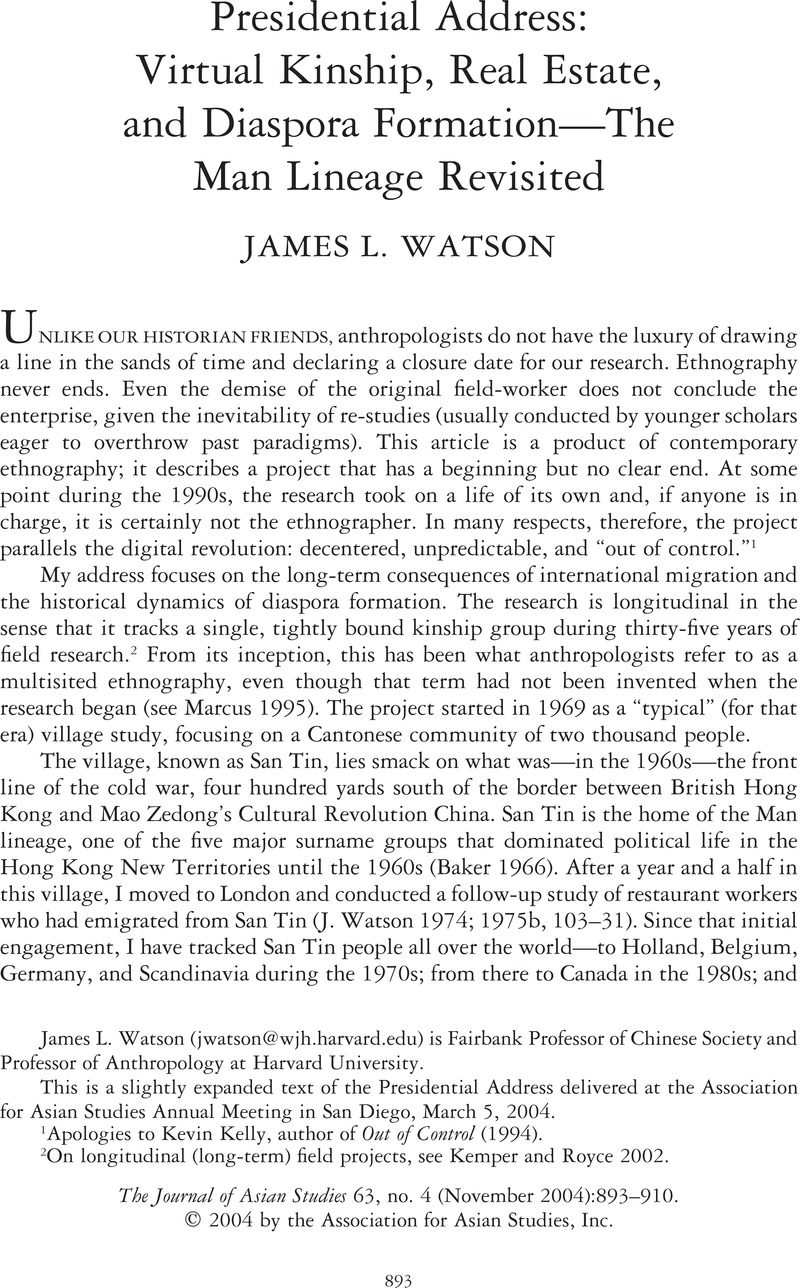Crossref Citations
This article has been cited by the following publications. This list is generated based on data provided by Crossref.
Caldwell, Melissa L.
and
Lozada, Eriberto P.
2007.
The Blackwell Companion to Globalization.
p.
498.
Pieke, Frank N.
2007.
Editorial Introduction: Community and identity in the new Chinese migration order.
Population, Space and Place,
Vol. 13,
Issue. 2,
p.
81.
Liu, Tik-sang
2008.
Custom, taste and science: Raising chickens in the Pearl River Delta Region, South China.
Anthropology & Medicine,
Vol. 15,
Issue. 1,
p.
7.
2010.
Cosmologies of Credit.
p.
171.
2010.
Cosmologies of Credit.
p.
269.
2010.
Cosmologies of Credit.
p.
217.
2010.
Cosmologies of Credit.
p.
31.
2010.
Cosmologies of Credit.
p.
1.
2010.
Cosmologies of Credit.
p.
141.
2010.
Cosmologies of Credit.
p.
107.
2010.
Cosmologies of Credit.
p.
59.
2010.
Cosmologies of Credit.
p.
257.
2010.
Cosmologies of Credit.
p.
295.
Akanle, Olayinka
and
Olutayo, Olanrewau
2011.
Kinship construction variability among Nigerian international migrants: The context of contemporary Diaspora.
Human Affairs,
Vol. 21,
Issue. 4,
p.
470.
Ma Mung, Emmanuel
2012.
Continuité temporelle, contiguïté spatiale et création d'un monde-propre.
L’Espace géographique,
Vol. Tome 41,
Issue. 4,
p.
352.
Werbner, Pnina
2012.
Oxford Handbook of the Politics of International Migration.
p.
215.
Xu, J.
and
Lee, J. C.
2013.
The Marginalized "Model" Minority: An Empirical Examination of the Racial Triangulation of Asian Americans.
Social Forces,
Vol. 91,
Issue. 4,
p.
1363.
Byrne, Denis
2016.
Heritage corridors: transnational flows and the built environment of migration.
Journal of Ethnic and Migration Studies,
Vol. 42,
Issue. 14,
p.
2360.
Brettell, Caroline B.
2016.
International Handbook of Migration and Population Distribution.
Vol. 6,
Issue. ,
p.
41.
Byrne, Denis
2016.
The need for a transnational approach to the material heritage of migration: The China–Australia corridor.
Journal of Social Archaeology,
Vol. 16,
Issue. 3,
p.
261.



